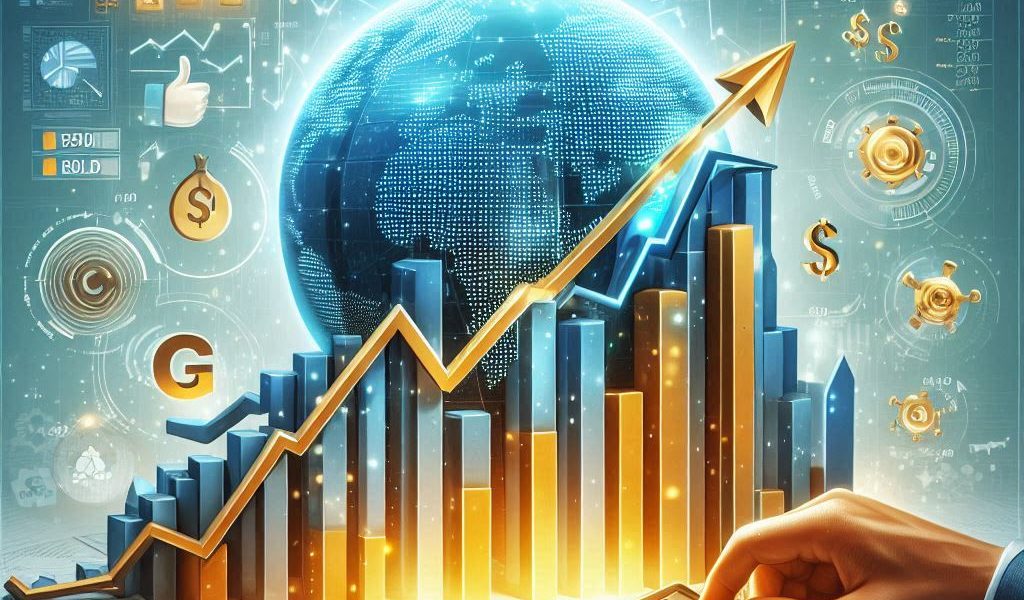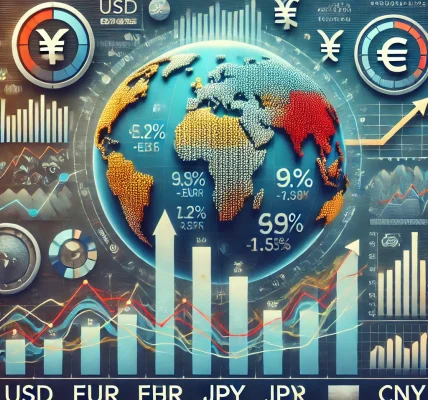Breaking Down the Latest GDP Growth Figures: What They Mean for the Economy and Investors
Gross Domestic Product (GDP) is one of the most closely watched economic indicators globally. It represents the total value of all goods and services produced within a country’s borders over a specific period. GDP growth figures are essential for understanding the health of an economy, its potential for future growth, and the general outlook for businesses and consumers. For investors, GDP growth can provide valuable insights into market trends, sector performance, and the potential impact on investment strategies. In this blog, we’ll break down the latest GDP growth figures, explore what they mean, and discuss their implications for the economy and your investment decisions.
What Is GDP and Why Is It Important?
GDP measures the overall economic activity within a country. It encompasses everything from consumer spending and business investments to government spending and net exports. GDP growth represents the change in a country’s economic output over time. Positive GDP growth indicates an expanding economy, while negative growth suggests contraction or a recession.
There are three primary approaches to calculating GDP:
- Production Approach: Adds up the value of all goods and services produced.
- Income Approach: Adds up all incomes earned by individuals and businesses in the country.
- Expenditure Approach: Measures the total spending on the economy’s final goods and services.
GDP growth is typically reported as an annualized rate, giving a snapshot of how the economy is performing compared to previous quarters or years.
1. Interpreting the Latest GDP Growth Figures
The latest GDP growth figures offer a glimpse into the economic health of a nation. To fully understand what these figures mean, it’s essential to look at the context and the components that drive GDP growth.
Overall GDP Growth Rate
A positive GDP growth rate signals a growing economy. For instance, if a country reports a 3% growth rate, this means that the country’s economy is expanding at that pace over the given period. This is generally a sign of economic stability, increased employment, and rising consumer demand. However, it’s essential to evaluate whether this growth is sustainable or if it’s driven by temporary factors such as government spending or stimulus measures.
Sector Contributions to GDP Growth
A breakdown of the sectors driving GDP growth can reveal much about the economy’s composition. For example, if growth is primarily driven by consumer spending, it indicates strong demand in the consumer goods sector. Conversely, if growth is driven by business investments or exports, it suggests expansion in the industrial or manufacturing sectors. A balanced growth across various sectors is generally seen as a sign of long-term economic stability.
Inflation and GDP Growth
While GDP growth is positive, it’s crucial to consider whether it is accompanied by inflation. If GDP growth is driven by higher prices rather than actual increases in economic output, it may signal inflationary pressures. High inflation can erode the purchasing power of consumers and increase costs for businesses, which can lead to reduced economic activity in the long run.
2. The Impact of GDP Growth on the Economy
Consumer Confidence and Spending
Positive GDP growth typically leads to higher consumer confidence. As the economy grows, wages rise, unemployment falls, and individuals feel more financially secure. This, in turn, boosts consumer spending, which is a significant contributor to GDP in many economies. Increased consumer spending supports businesses, which often respond by expanding operations and hiring more workers.
Business Investments and Expansion
When GDP growth is strong, businesses are more likely to invest in new projects, expand operations, and hire additional workers. They may take on new loans, launch new products, or explore new markets—all of which contribute to further economic growth. In contrast, weak GDP growth can lead to reduced business confidence, which can cause businesses to delay investments and hiring.
Government Policy and Fiscal Measures
Governments closely monitor GDP growth figures and may adjust their fiscal policies accordingly. For instance, if GDP growth is strong, governments may reduce stimulus spending or even raise taxes to prevent the economy from overheating. On the other hand, if GDP growth is sluggish or negative, governments may implement stimulus measures, such as infrastructure spending or tax cuts, to spur economic activity.
3. What Do GDP Growth Figures Mean for Investors?
For investors, GDP growth figures offer key insights into market conditions and help inform investment strategies. Here’s how the latest GDP growth numbers might influence investment decisions:
Stock Market Performance
Stock markets tend to perform well when GDP growth is strong. As companies report higher profits due to increased demand, their stock prices generally rise. Positive GDP growth can signal an environment of rising corporate earnings, which makes equities more attractive. However, if growth is too rapid, leading to inflation, central banks may raise interest rates, which could negatively affect stock prices.
Bond Markets and Interest Rates
Strong GDP growth often leads to higher interest rates as central banks aim to keep inflation under control. Rising interest rates make bonds more attractive as they offer higher yields. Conversely, during periods of slow GDP growth, central banks may lower rates to stimulate the economy, which can lead to lower yields on bonds and a potential increase in bond prices.
Sector Performance
Different sectors respond to GDP growth in varying ways. For example, sectors such as consumer discretionary, technology, and industrials may perform better during periods of strong GDP growth as consumers and businesses increase spending. Conversely, in periods of weak GDP growth, defensive sectors like utilities and healthcare may perform better as they provide essential services that are less sensitive to economic cycles.
Global Economic Influence
For international investors, GDP growth in key economies like the U.S., China, and the European Union can significantly impact global markets. Strong GDP growth in these economies can lead to increased demand for commodities, goods, and services, benefiting companies in export-driven sectors. On the other hand, weak growth in these economies can reduce global trade and affect investment returns in emerging markets.
4. Key Takeaways for Investors
- Monitor GDP Growth Trends: Keep an eye on quarterly and annual GDP growth figures to understand economic trends and make informed investment decisions.
- Evaluate Sector Contributions: Look at which sectors are driving growth and whether the growth is broad-based or concentrated in specific industries.
- Watch Inflation: Ensure that GDP growth isn’t being driven by inflation alone. High inflation can erode purchasing power and affect corporate profits.
- Adjust Investment Strategies: Tailor your portfolio to reflect the current economic environment, shifting between asset classes (stocks, bonds, commodities) based on GDP growth trends.
Conclusion: Understanding the Bigger Picture of GDP Growth
Breaking down the latest GDP growth figures is essential for understanding the economic landscape. These numbers provide valuable insights into the health of an economy, consumer behavior, and business investment. For investors, staying informed about GDP growth is crucial for making sound investment decisions and positioning portfolios for long-term success.




